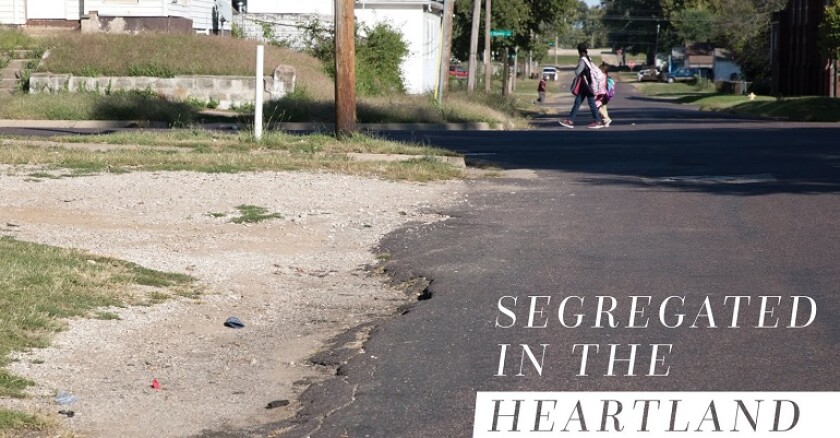But why are so many cities and metropolitan areas still split along racial lines? And what is the role of local government in reinforcing those divides?
Segregation may be more pronounced in major metropolitan areas, like Chicago and Detroit, but our investigation found that it is a common feature in smaller metro areas, too. What’s more, by looking at small cities, we were able to distill some of the common problems in local government that exacerbate segregation, in areas such as housing, schools and law enforcement.
America’s racial divide runs right through the Heartland. Examining segregation in these Midwestern cities provides a lens for viewing much larger patterns in the country as a whole.
Stories
Houses Divided:How States and Cities Reinforce Segregation in AmericaStill Separate After All These Years:How Schools Fuel White Flight
Segregated schools aren’t just the products of segregated neighborhoods. In many cases, predominantly white schools are driving the racial divide.
Broken Homes:How Housing Policies Keep White Neighborhoods So White (and Black Neighborhoods So Black)
Decades of local zoning regulations and land use policies have kept racial segregation firmly rooted in place.
Black, White and Blue:How Police and Anti-Crime Measures Reinforce Segregation
Cities' efforts to get tough on crime can make it harder for low-income residents to find good jobs and housing.
Summary of Major Findings
High Residential Segregation: The Peoria area had the sixth-highest level of segregation measured between blacks and whites of any metro area in the country, while the Danville area ranked 12th nationally. Kankakee, Rockford and Springfield were similarly among the top third most segregated metro areas between black and whites.
Lack of Progress: Levels of segregation within the Champaign-Urbana, Danville and Peoria areas have remained essentially unchanged since 1980, counter to prevailing national downward trends.
White Flight: Many areas of Illinois have experienced significant white flight over the past several decades. This pattern has continued in recent years in some urban neighborhoods. (View map)
Extremely Segregated Schools: Our analysis of federal data found the Peoria metro area had the most segregated schools between black and white students of any area nationally, regardless of size. The problem is prevalent throughout the state, with black-white school segregation in eight of 10 Illinois metro areas in the top third in the U.S. Only Bloomington-Normal and Carbondale recorded lower levels of segregation.
School District Segregation: Segregation within individual school districts is much less severe than in entire metro areas, suggesting school district boundaries contribute to segregation.
Shifting School Demographics: Over the past 15 years, nearly all large urban downstate Illinois school districts lost at least a third of white student enrollment. Suburban school districts haven't experienced nearly the same declines.
Black Incomes Lag Far Behind: Racial disparities in household incomes are severe throughout Illinois. In Springfield, differences between median black and white incomes were greater than any other metro area nationally. They were also among the top 10 percent in the Bloomington-Normal, Decatur, Kankakee and Peoria metro areas.
Elevated Black Poverty Rates: The latest Census estimates suggest Peoria has the highest black poverty rate of any larger metro area. Several other Illinois metro areas similarly recorded among the steepest black poverty rates nationally.
Data and Maps
- Illinois Residential Segregation
- Residential Segregation for U.S. Metro Areas
- Illinois School Segregation
- School Segregation for U.S. Metro Areas
- Black Economic Indicators for Illinois Metro Areas
- Map: Demographic Changes in Illinois Neighborhoods
- Map: White Flight in Illinois
- Methodology









